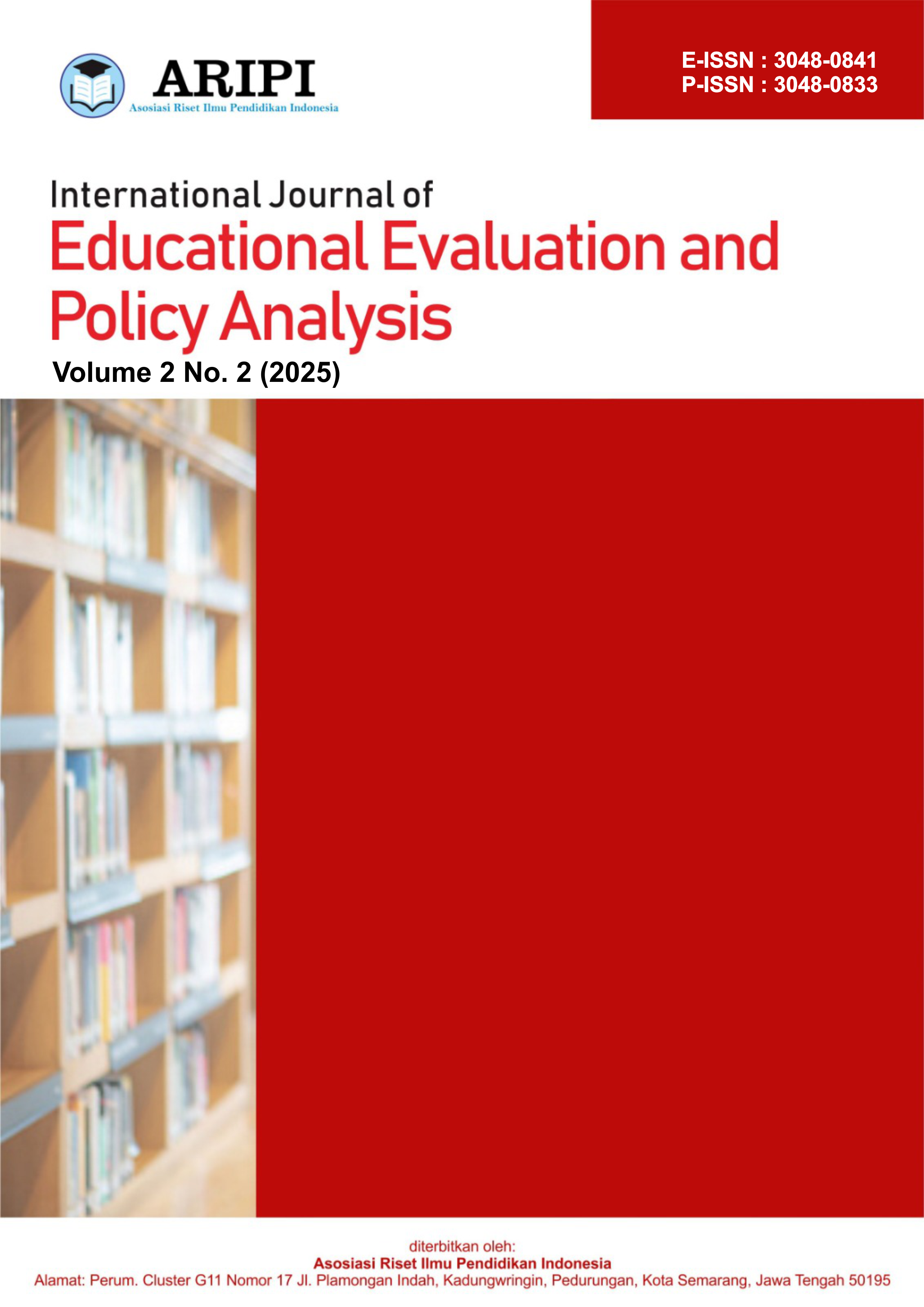Cultural Schemata and Linguistic Relativity: How Language Shapes Perception Across Diverse Communities
DOI:
https://doi.org/10.62951/ijeepa.v2i2.257Keywords:
Cross-cultural cognition, Cultural schemata, Linguistic anthropology, Linguistic relativity, Mental representationAbstract
This study investigates the interplay between linguistic relativity and cultural schemata, examining how language encodes culturally salient concepts and shapes cognitive frameworks across diverse communities. Through ethnographic and psycholinguistic approaches, the study collects data from 12 different language communities with varied cultural backgrounds. Cross-linguistic and cross-cultural analyses reveal significant correlations between linguistic structures—such as grammatical categories, lexical distinctions, and metaphorical expressions—and culturally specific schemata in spatial, temporal, and social domains. Perception and cognitive reasoning experiments were conducted with 450 participants to test linguistic relativity hypotheses in cultural contexts. Quantitative and qualitative findings demonstrate that linguistic patterns both reflect and reinforce cultural norms, influencing perception and cognitive strategies. Analysis of cultural text corpora shows how linguistic categories serve as vehicles for internalizing cultural values and worldviews. Specifically, the study finds systematic variations in spatial information processing, time conceptualization, and social event interpretation that correlate with language features of respective communities. These results underscore the co-constitutive relationship between language and culture in shaping human thought, providing important implications for cross-cultural education, intercultural communication, and cognitive theory.
References
Athanasopoulos, P., Bylund, E., Montero-Melis, G., Damjanovic, L., Schartner, A., Kibbe, A., Riches, N., & Thierry, G. (2015). Two languages, two minds: Flexible cognitive processing driven by language of operation. Psychological Science, 26(4), 518-526. https://doi.org/10.1177/0956797614567509
Barsalou, L. W. (2008). Grounded cognition. Annual Review of Psychology, 59, 617-645. https://doi.org/10.1146/annurev.psych.59.103006.093639
Boroditsky, L. (2011). How language shapes thought. Scientific American, 304(2), 62-65. https://doi.org/10.1038/scientificamerican0211-62
Boroditsky, L., & Gaby, A. (2010). Remembrances of times East: Absolute spatial representations of time in an Australian aboriginal community. Psychological Science, 21(11), 1635-1639. https://doi.org/10.1177/0956797610386621
Bylund, E., & Athanasopoulos, P. (2017). The Whorfian time warp: Representing duration through the language hourglass. Journal of Experimental Psychology: General, 146(7), 911-916. https://doi.org/10.1037/xge0000314
Casasanto, D. (2016). Linguistic relativity. In N. Riemer (Ed.), The Routledge handbook of semantics (pp. 158-174). Routledge. https://doi.org/10.4324/9781315685533
Chen, M. K. (2013). The effect of language on economic behavior: Evidence from savings rates, health behaviors, and retirement assets. American Economic Review, 103(2), 690-731. https://doi.org/10.1257/aer.103.2.690
Cibelli, E., Xu, Y., Austerweil, J. L., Griffiths, T. L., & Regier, T. (2016). The Sapir-Whorf hypothesis and probabilistic inference: Evidence from the domain of color. PLOS ONE, 11(7), e0158725. https://doi.org/10.1371/journal.pone.0158725
D'Andrade, R. G. (1992). Schemas and motivation. In R. G. D'Andrade & C. Strauss (Eds.), Human motives and cultural models (pp. 23-44). Cambridge University Press. https://doi.org/10.1017/CBO9781139166515.003
Dehaene, S., Izard, V., Pica, P., & Spelke, E. (2006). Core knowledge of geometry in an Amazonian indigene group. Science, 311(5759), 381-384. https://doi.org/10.1126/science.1121739
Enfield, N. J. (2015). The utility of meaning: What words mean and why. Oxford University Press. https://doi.org/10.1093/acprof:oso/9780198709831.001.0001
Evans, N., & Levinson, S. C. (2009). The myth of language universals: Language diversity and its importance for cognitive science. Behavioral and Brain Sciences, 32(5), 429-448. https://doi.org/10.1017/S0140525X0999094X
Fausey, C. M., & Boroditsky, L. (2011). Who dunnit? Cross-linguistic differences in eye-witness memory. Psychonomic Bulletin & Review, 18(1), 150-157. https://doi.org/10.3758/s13423-010-0021-5
Filipović, L. (2018). Speaking in a second language but thinking in the first language: Language-specific effects on memory for causation events in English and Spanish. International Journal of Bilingualism, 22(2), 180-198. https://doi.org/10.1177/1367006916661636
Gentner, D., & Goldin-Meadow, S. (Eds.). (2003). Language in mind: Advances in the study of language and thought. MIT Press. https://doi.org/10.7551/mitpress/4117.001.0001
Ji, L. J., Zhang, Z., & Nisbett, R. E. (2004). Is it culture or is it language? Examination of language effects in cross-cultural research on categorization. Journal of Personality and Social Psychology, 87(1), 57-65. https://doi.org/10.1037/0022-3514.87.1.57
Kay, P., & Kempton, W. (1984). What is the Sapir‐Whorf hypothesis? American Anthropologist, 86(1), 65-79. https://doi.org/10.1525/aa.1984.86.1.02a00050
Levinson, S. C. (2003). Space in language and cognition: Explorations in cognitive diversity. Cambridge University Press. https://doi.org/10.1017/CBO9780511613609
Lucy, J. A. (2016). Recent advances in the study of linguistic relativity in historical context: A critical assessment. Language Learning, 66(3), 487-515. https://doi.org/10.1111/lang.12195
Majid, A., & Burenhult, N. (2014). Odors are expressible in language, as long as you speak the right language. Cognition, 130(2), 266-270. https://doi.org/10.1016/j.cognition.2013.11.004
Nisbett, R. E., & Masuda, T. (2003). Culture and point of view. Proceedings of the National Academy of Sciences, 100(19), 11163-11170. https://doi.org/10.1073/pnas.1934527100
Ogunnaike, O., Dunham, Y., & Banaji, M. R. (2010). The language of implicit preferences. Journal of Experimental Social Psychology, 46(6), 999-1003. https://doi.org/10.1016/j.jesp.2010.07.006
Quinn, N. (2005). How to reconstruct schemas people share, from what they say. In N. Quinn (Ed.), Finding culture in talk: A collection of methods (pp. 35-81). Palgrave Macmillan. https://doi.org/10.1007/978-1-137-05871-3_2
Regier, T., & Kay, P. (2009). Language, thought, and color: Whorf was half right. Trends in Cognitive Sciences, 13(10), 439-446. https://doi.org/10.1016/j.tics.2009.07.001
Shore, B. (1996). Culture in mind: Cognition, culture, and the problem of meaning. Oxford University Press. https://doi.org/10.1093/acprof:oso/9780195095661.001.0001
Slobin, D. I. (2003). Language and thought online: Cognitive consequences of linguistic relativity. In D. Gentner & S. Goldin-Meadow (Eds.), Language in mind: Advances in the study of language and thought (pp. 157-192). MIT Press. https://doi.org/10.7551/mitpress/4117.003.0012
Wierzbicka, A. (2013). Imprisoned in English: The hazards of English as a default language. Oxford University Press. https://doi.org/10.1093/acprof:oso/9780199321490.001.0001
Wolff, P., & Holmes, K. J. (2011). Linguistic relativity. Wiley Interdisciplinary Reviews: Cognitive Science, 2(3), 253-265. https://doi.org/10.1002/wcs.104
Downloads
Published
Issue
Section
License
Copyright (c) 2025 International Journal of Educational Evaluation and Policy Analysis

This work is licensed under a Creative Commons Attribution-ShareAlike 4.0 International License.




